The Rise of Remote Wellness Monitoring Tools for Seniors
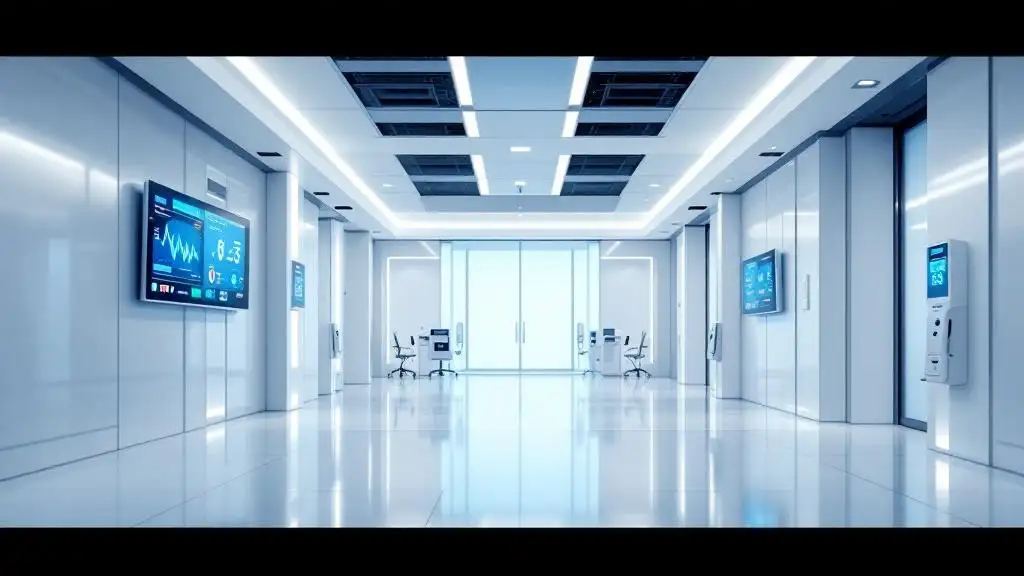
A New Era in Senior Healthcare
The landscape of senior healthcare is rapidly evolving with the advent and integration of remote wellness monitoring tools. These innovative technologies, rooted in decades of development from early pioneers like Alexander Graham Bell to today's AI-driven platforms, are transforming how care is delivered to the elderly. As the global population ages—expected to increase by nearly 47% in the U.S. alone by 2050—the demand for accessible, efficient, and proactive health management solutions is more urgent than ever. This article explores the technological advances, benefits, challenges, and future prospects of remote wellness monitoring tools, highlighting their critical role in supporting independent living, improving health outcomes, and reshaping healthcare ecosystems worldwide.
Historical Evolution and Technological Milestones in Remote Monitoring
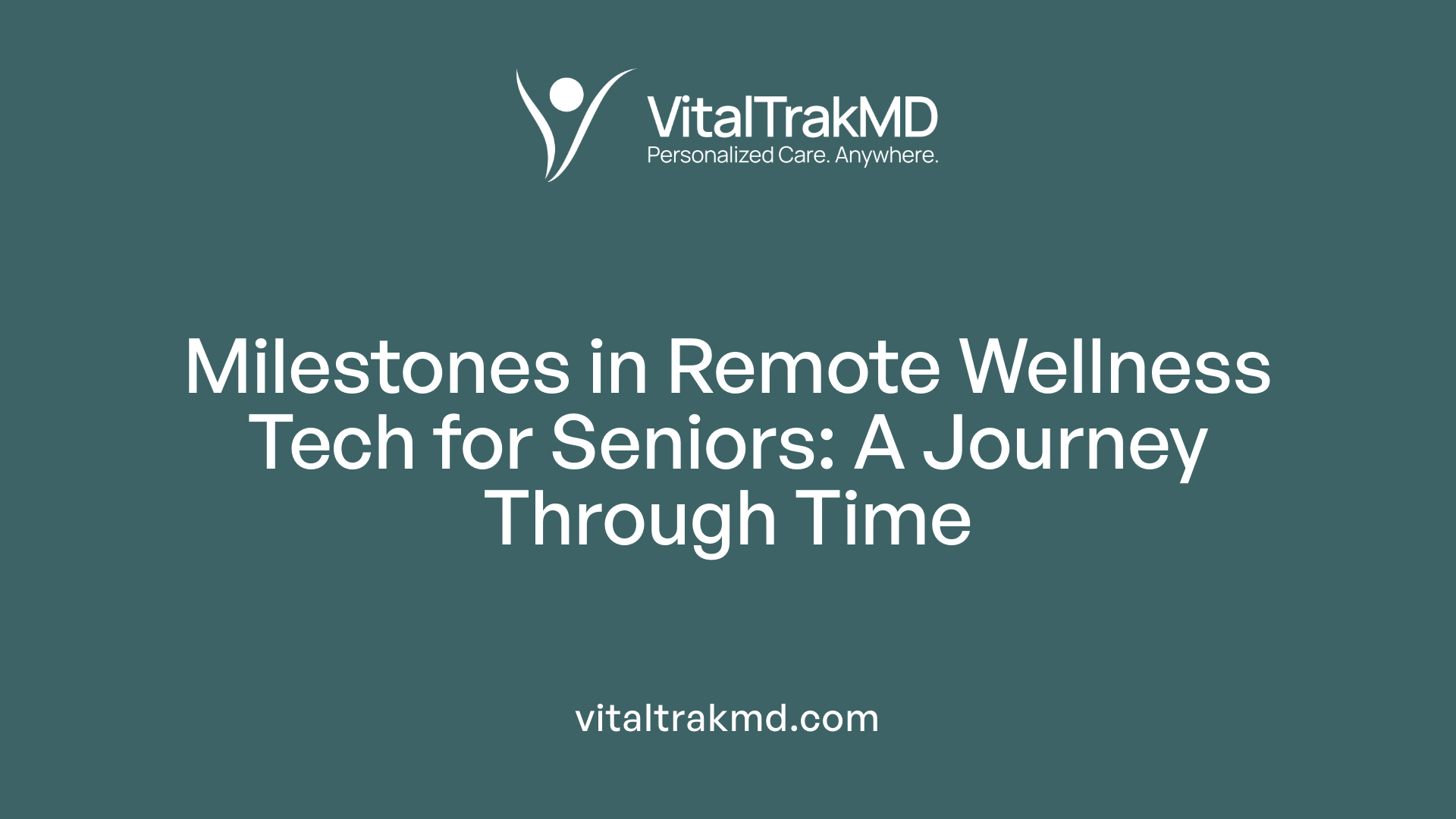
How have remote wellness monitoring tools evolved over time for elderly care?
Remote wellness monitoring tools for elderly care have seen substantial progress over the decades. Early systems relied on basic telecommunication methods, such as Alexander Graham Bell's telephone patent in 1876, which laid the groundwork for transmitting health data remotely.
With technological advancements, radio communication was introduced in the mid-20th century, allowing some of the first instances of wireless health monitoring. NASA's use of biologic data transmission in 1961 during space flights marked an important milestone, demonstrating the potential for uninterrupted health tracking.
The 1980s brought Bluetooth technology in 1982, enabling wearable biometric devices like sports watches that could monitor vital signs wirelessly. The internet's emergence in 1983 and the launch of the first web browser in 1993 transformed remote healthcare, making data sharing more accessible.
In recent years, the integration of artificial intelligence (AI) and Internet of Things (IoT) connectivity has revolutionized remote monitoring. Wearables, smart sensors, and implantable devices now collect real-time vital data, which AI analytics interpret to predict health risks and enable early interventions.
Sophisticated user interfaces and tailored solutions aim to address the complex technological needs of older adults, while enhanced data security measures ensure privacy compliance. These innovations allow seniors to age in place confidently while maintaining ongoing contact with healthcare providers.
Together, these milestones highlight a trajectory from basic remote communication to highly personalized, intelligent health management tools, fundamentally transforming elderly healthcare and chronic disease management.
Current Technologies and Devices in Remote Senior Care
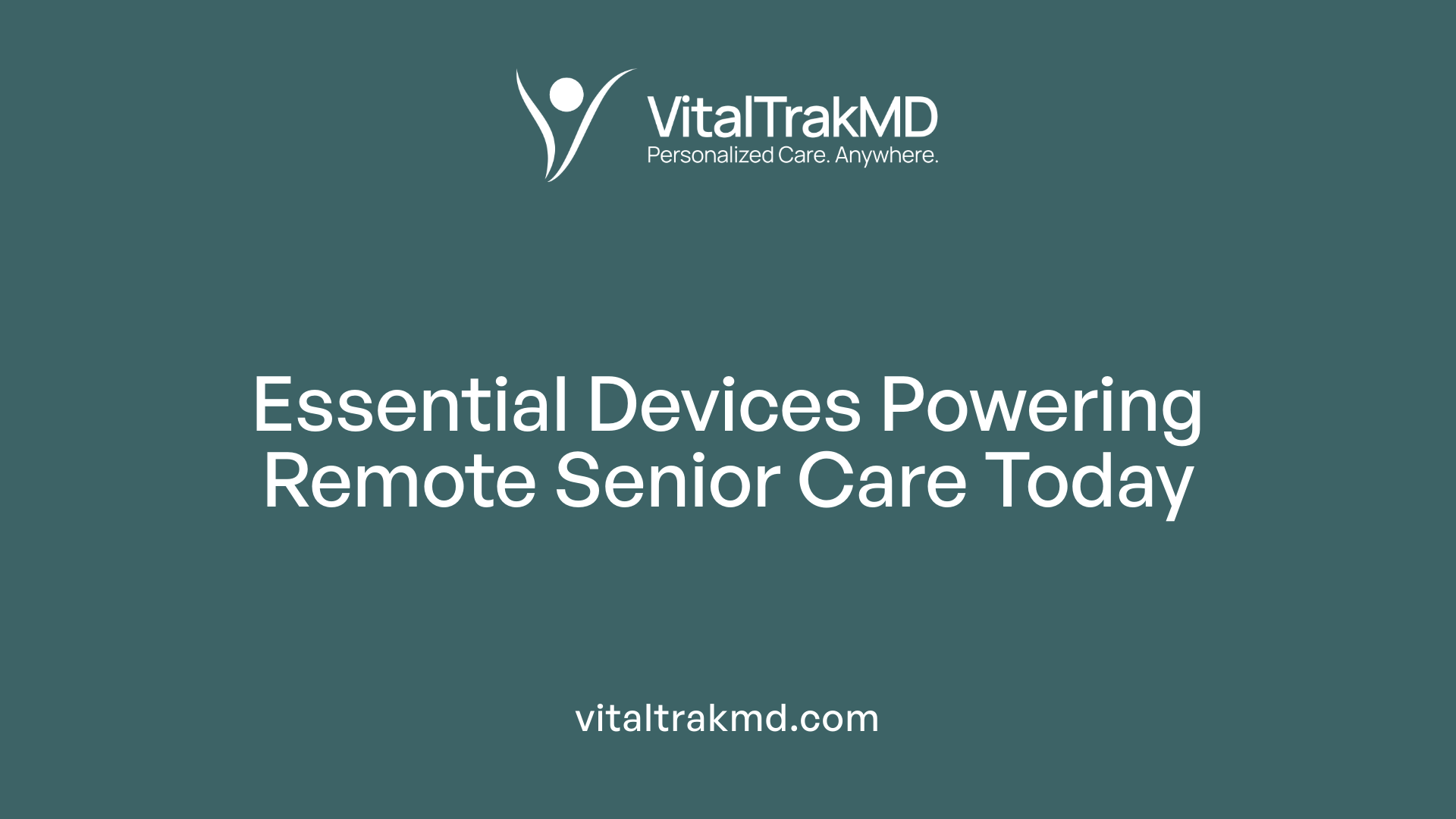
What are the different types of remote patient monitoring tools?
Remote patient monitoring (RPM) tools include a diverse set of devices designed to collect health data outside traditional clinical environments. For seniors, these tools are vital in enabling independence and early detection of health issues.
Wearables and activity trackers are among the most common RPM devices. These include smartwatches and fitness bands that continuously monitor vital signs such as heart rate and activity levels. They can alert caregivers to sudden changes or falls, providing immediate safety features.
Remote vital signs monitors are clinical-grade devices like blood pressure cuffs, glucometers, pulse oximeters, and thermometers. These allow seniors to measure essential health indicators at home regularly, transmitting data wirelessly to healthcare providers for ongoing assessment.
Smart home integration is increasingly popular, featuring sensors and systems embedded within the living space. Devices such as fall detectors, motion sensors, and voice-activated systems enable continuous monitoring without requiring seniors to interact directly with technology actively.
Implantable devices, such as pacemakers and defibrillators, play a critical role in managing specific chronic conditions. These devices collect physiological data and transmit it securely for review, often synchronized with smartphone applications for better management.
Collectively, these tools support comprehensive health monitoring, enabling early intervention, reducing hospital readmissions, and promoting aging in place. Their integration into daily life emphasizes safety, health management, and independence for older adults.
Benefits of Remote Monitoring for Senior Health and Independence
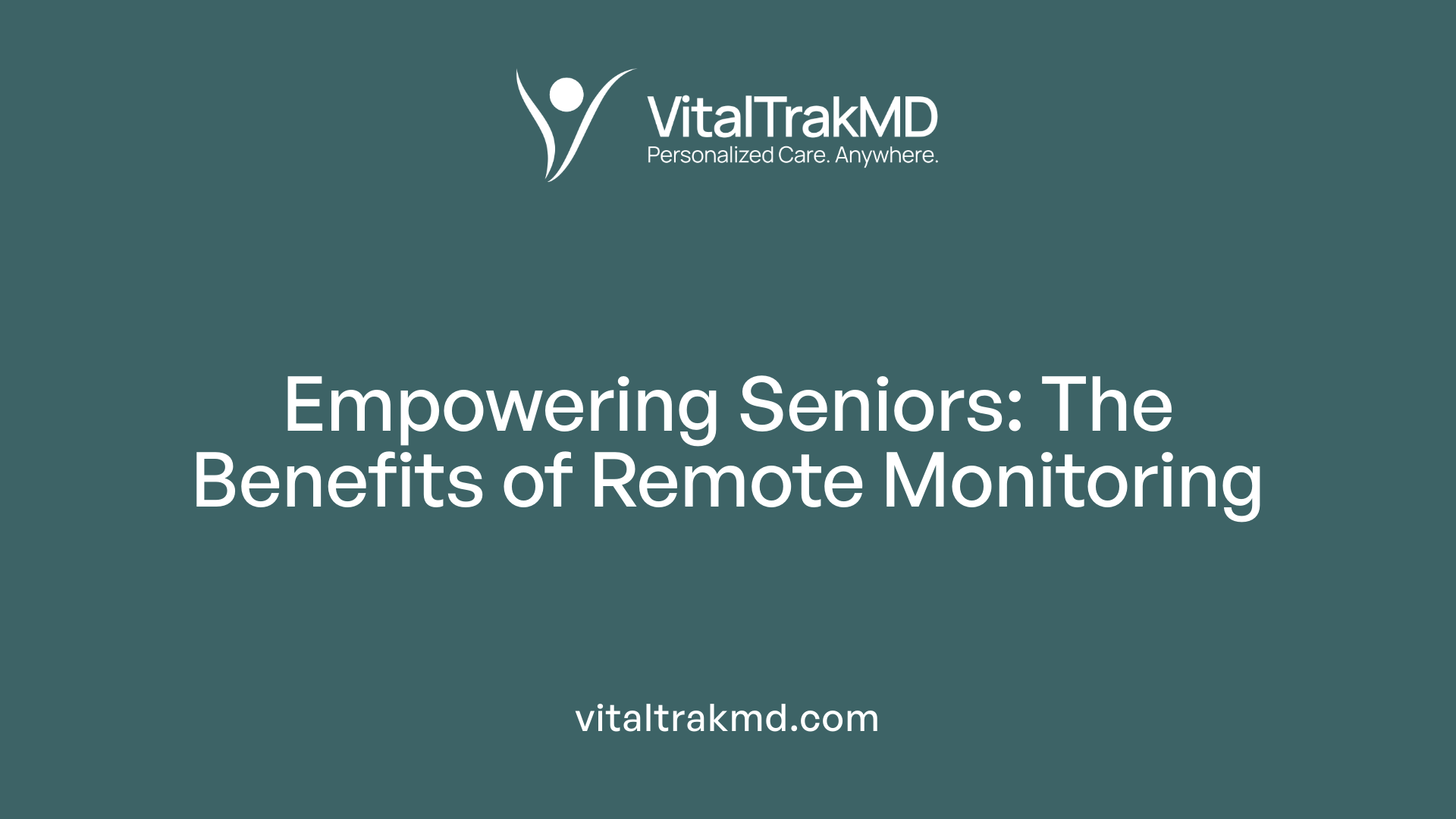
What are the benefits of using remote wellness monitoring tools for seniors?
Remote wellness monitoring tools bring numerous advantages to seniors. These devices enable continuous tracking of vital signs such as blood pressure, heart rate, blood sugar, and activity levels, which allows healthcare providers to detect health issues early. Early detection means interventions can happen promptly, reducing the risk of complications.
These systems support aging in place, helping seniors manage their health from home. User-friendly devices tailored to specific health conditions empower older adults to maintain independence and adhere to care plans without frequent trips to clinics.
Remote monitoring also reduces the need for emergency visits, hospital stays, and readmissions, leading to lower healthcare costs overall. For seniors living in rural or remote areas, RPM improves access to quality care and facilitates better communication with healthcare teams.
Families and caregivers gain peace of mind knowing that health data is continuously monitored and that any concerning changes are flagged immediately. The combination of safety, convenience, and improved health outcomes makes remote wellness monitoring an essential tool in senior care.
In summary, RPM offers seniors the chance to stay healthier, independent, and engaged while easing the workload on healthcare providers and reducing overall healthcare expenses.
Challenges and Limitations of Remote Wellness Technologies
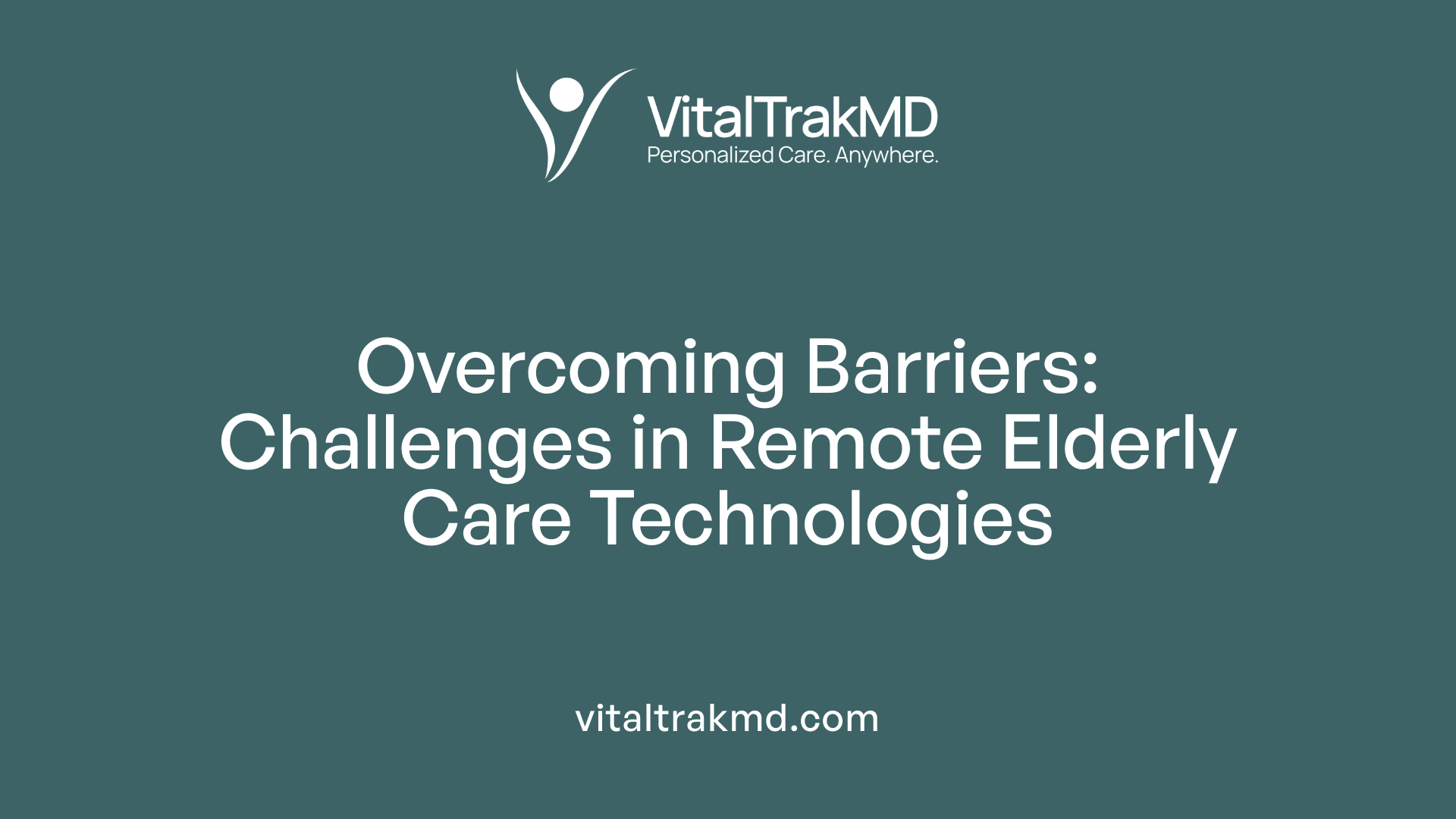
What challenges and limitations are associated with remote health monitoring technologies for seniors?
Remote health monitoring, or RPM, has shown great promise in supporting seniors' health and independence. However, several hurdles need to be addressed to maximize its benefits.
One major challenge pertains to technological usability issues. Many older adults face difficulties with device operation, such as pairing Bluetooth devices or navigating user interfaces. For example, complex setups and small screens can discourage consistent use, especially among those with limited digital literacy. As a result, adherence rates can drop, reducing the effectiveness of RPM programs.
Data security and privacy are also critical concerns. Large volumes of sensitive health information are transmitted and stored digitally, raising risks of hacking and unauthorized access. Ensuring compliance with privacy laws like HIPAA involves implementing robust encryption, secure data channels, and strict access controls. Without these safeguards, trust in RPM systems can diminish.
Organizational and workload challenges cannot be overlooked. Integrating RPM data into existing healthcare workflows creates a substantial influx of information for providers. Managing this data load requires advanced analytics and sufficient staffing, which can strain resources. Moreover, healthcare providers may need training to interpret and act on remote monitoring information effectively.
Economic and access barriers also limit RPM's reach. The initial costs for devices and setup can be high, and reimbursement policies are not universally supportive. Many low-income seniors or those in underserved areas lack reliable internet or suitable devices, further widening disparities. Without affordable access and clear insurance coverage, adoption remains slow.
Addressing these issues involves improving device usability with simplified interfaces, strengthening cybersecurity measures, streamlining data integration, and developing equitable funding models. Only by overcoming these systemic challenges can remote wellness technologies fulfill their potential for enhancing senior care.
Impact on Health Outcomes and Aging in Place
What is the impact of remote wellness monitoring on health outcomes and aging in place?
Remote wellness monitoring, including tools like remote patient monitoring (RPM) and passive remote monitoring (PRM), plays a vital role in improving health outcomes for seniors. These technologies continuously track vital signs such as blood pressure, heart rate, blood glucose, and movement, providing a comprehensive view of an individual's health status.
This consistent data collection allows healthcare providers to detect early signs of deterioration—such as changes in mobility or vital sign fluctuations—prompting timely interventions. Such proactive measures can help prevent emergencies, reduce hospital admissions, and manage chronic conditions more effectively.
Moreover, remote health monitoring supports aging in place by fostering greater independence and confidence among older adults. Seniors can maintain their routines at home while staying connected with healthcare teams through real-time data sharing and alerts. This facilitates personalized care plans tailored to individual needs, encouraging self-management and better adherence to treatments.
By enabling remote oversight, these tools can delay or eliminate the need for institutionalization, aligning with seniors’ preference to live independently. They also help reduce the frequency of in-person visits, easing the burden on caregivers and health systems.
Despite these benefits, challenges like ensuring technological acceptance by the elderly, addressing privacy concerns, and managing increased provider workload remain. Overcoming these hurdles is crucial to maximizing the positive impact of remote wellness tools for aging populations.
Emerging Trends and Future Outlook in Senior Monitoring Technologies
What is the future outlook for remote wellness monitoring technologies in senior care?
The future of remote wellness monitoring in senior care appears extremely bright, with ongoing technological innovations paving the way for widespread adoption. Advancements such as 5G connectivity, artificial intelligence (AI), machine learning, and sophisticated wearable devices enable real-time, predictive, and personalized healthcare solutions.
These tools are increasingly integrated into existing healthcare frameworks, helping reduce hospital readmissions and lowering costs through innovative care models like Hospital at Home. They support better management of chronic diseases by providing continuous data and early alerts, allowing timely interventions.
Moreover, these technologies help seniors age in place, which is highly valued by the elderly population, by enabling remote health supervision and reducing social isolation. They also help address caregiver shortages and improve overall access to healthcare services.
As the global elderly population grows, the demand for efficient, accessible, and proactive care solutions will accelerate. RPM technologies are therefore expected to become integral to future healthcare, transforming the way seniors are cared for and significantly enhancing their quality of life.
Overall, remote monitoring is set to revolutionize senior healthcare by making it more personalized, efficient, and responsive, supporting independent living and improving health outcomes.
Health Practitioner Perspectives and Policy Implications
What do healthcare practitioners think about remote patient monitoring systems for seniors?
Healthcare providers see RPM as a highly promising tool in the future of senior care. They appreciate its ability to monitor vital signs continuously, helping to detect health issues early and prevent emergencies. Many practitioners note that RPM facilitates smoother communication with patients and supports greater independence for seniors living at home.
Practitioners also recognize that RPM can lead to better health outcomes — fewer hospital readmissions, improved disease management, and increased patient confidence and engagement. Especially for chronic conditions like heart failure, diabetes, and hypertension, RPM offers real-time data that helps tailor treatments effectively.
However, healthcare professionals also voice important concerns. They worry about the extra workload caused by managing large volumes of data, potential inaccuracies that could affect patient safety, and risks related to data security and privacy.
Additionally, some practitioners highlight challenges specific to elderly patients, such as difficulties with technology use and understanding how to manage devices confidently. Financial barriers and reimbursement complexities further complicate widespread adoption.
To fully harness the benefits of RPM, many providers suggest combining technological solutions with robust patient education and ongoing provider support. They emphasize that human oversight remains vital in interpreting data, making clinical decisions, and ensuring that RPM tools truly serve the best interest of seniors.
A Promising Horizon in Senior Healthcare
The integration of remote wellness monitoring tools into senior healthcare signifies a pivotal shift towards more personalized, accessible, and effective care. As technology continues to evolve—driven by AI, IoT, and telehealth—the potential to enhance health outcomes, prolong independence, and optimize healthcare resources grows exponentially. Policymakers, practitioners, and technology developers must collaborate to overcome existing challenges related to usability, privacy, and cost, ensuring these innovations reach those who need them most. The future of remote wellness monitoring holds the promise of transforming aging experiences, allowing seniors worldwide to enjoy healthier, safer, and more autonomous lives.
References
- Remote Patient Monitoring for Senior Living has collected a lot of data
- Remote Health Monitoring for Older Adults and Those with Heart ...
- The Intersection of Wearables, Remote Patient Monitoring, and AI
- Benefits and Challenges of Remote Patient Monitoring as Perceived ...
- Team8 on ageing with dignity: remote monitoring, digital healthcare ...
- History of Remote Patient Monitoring: How It Began & Where It's Going
- A systematic review of the impacts of remote patient monitoring ...
- Setting the Stage for Remote Patient Monitoring (RPM) in Senior Care
- The Extensive Approach to Remote Patient Monitoring for Elderly ...
Recent articles
Want to Feel Better and Live Healthier?
Join hundreds of patients taking control of their health with personalized care that fits their life – not the other way around.
Rated 4.8/5 by 32+ customers







